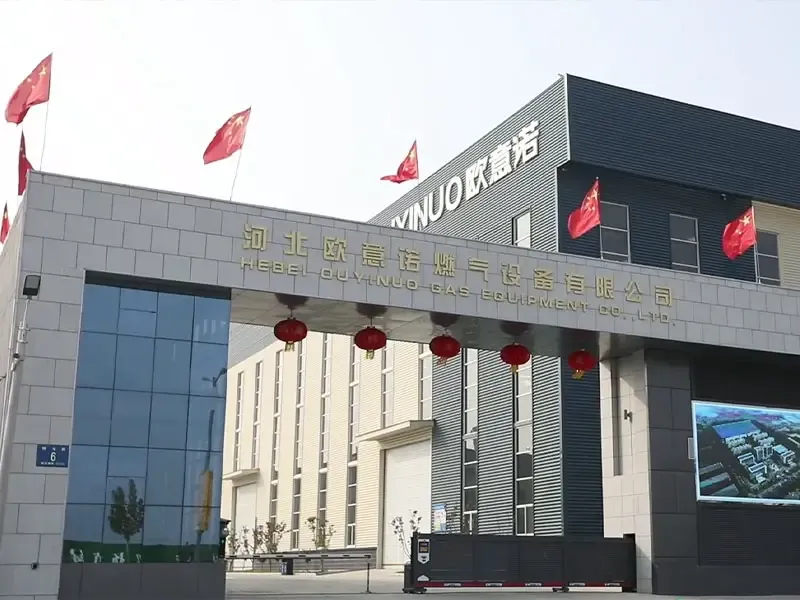
Nov . 08, 2024 12:04
Back to list
Mobile and Compact Equipment Solutions for Various Industries and Applications
Skid-Mounted Equipment An Overview
In the modern industrial landscape, efficiency and adaptability are prized commodities. One innovative solution that has gained considerable traction in various sectors, including oil and gas, construction, and manufacturing, is skid-mounted equipment. This versatile form of machinery offers numerous benefits that can enhance operations, minimize downtime, and ultimately contribute to a company's bottom line.
What is Skid-Mounted Equipment?
Skid-mounted equipment refers to machinery or systems that are mounted on a robust framework or 'skid' for transportation and installation ease. Typically constructed from steel or aluminum, this skid not only facilitates mobility but also provides a stable base for the equipment it carries. Skid-mounted solutions can encompass a wide range of machinery, including generators, compressors, pumps, and processing units.
Benefits of Skid-Mounted Equipment
1. Mobility and Portability One of the most significant advantages of skid-mounted equipment is its portability. These systems can be easily transported from one site to another, making them ideal for projects that require mobility. Industries like oil and gas frequently employ skid-mounted solutions due to the transient nature of drilling and exploration.
2. Ease of Installation The design of skid-mounted equipment often allows for quick setup and teardown, drastically reducing installation time compared to traditional installations that may require extensive foundation work. This feature is particularly beneficial in remote locations where time and resource availability can be challenging.
3. Space Efficiency Skid-mounted units are designed to optimize space, often housing multiple pieces of equipment within a compact footprint. This efficient use of space is especially important in industries where operational areas are limited or where multiple systems must fit within a designated zone.
skid mounted equipment

4. Reduced Capital Expenditure Organizations can save on capital expenditures by investing in skid-mounted equipment, which can be less expensive than custom-built installations. Additionally, the ability to rent or lease these units further reduces financial burdens, allowing businesses to allocate resources more effectively.
5. Modularity Skid-mounted equipment can be modular, meaning it can be easily expanded or modified to accommodate changes in operational needs. This adaptability allows businesses to invest in equipment that can grow with them, rather than becoming obsolete as requirements evolve.
6. Simplified Maintenance These systems often integrate all necessary components within a single skid-mounted frame, simplifying maintenance and service tasks. This all-in-one approach allows technicians to access equipment quickly and efficiently, reducing downtime during maintenance periods.
Applications of Skid-Mounted Equipment
Skid-mounted equipment is utilized across various industries. In the oil and gas sector, for instance, exploration sites frequently deploy skid-mounted rigs and support equipment tailored for drilling operations. Similarly, in construction, portable generators and water pump stations are often skid-mounted for ease of transport and setup.
The chemical processing industry also benefits from skid-mounted solutions, where chemical dosing systems and modular reactors can be positioned close to areas of need, ensuring rapid response times and efficient processes.
Conclusion
In a world that demands flexibility and efficiency, skid-mounted equipment represents a forward-thinking solution that meets the needs of various industries. The benefits—ranging from mobility and reduced costs to ease of maintenance—make these systems an attractive option for companies looking to enhance their operational capabilities. As industries continue to evolve and adapt, the role of skid-mounted equipment is likely to expand, further cementing its place as an essential component in modern industrial practices. By investing in this innovative technology, businesses can fully capitalize on the opportunities that come with increased efficiency and adaptability in their operations.
Latest news
-
Safety Valve Spring-Loaded Design Overpressure ProtectionNewsJul.25,2025
-
Precision Voltage Regulator AC5 Accuracy Grade PerformanceNewsJul.25,2025
-
Natural Gas Pressure Regulating Skid Industrial Pipeline ApplicationsNewsJul.25,2025
-
Natural Gas Filter Stainless Steel Mesh Element DesignNewsJul.25,2025
-
Gas Pressure Regulator Valve Direct-Acting Spring-Loaded DesignNewsJul.25,2025
-
Decompression Equipment Multi-Stage Heat Exchange System DesignNewsJul.25,2025

